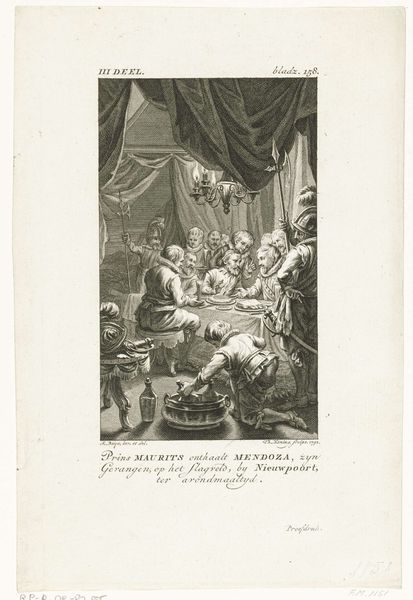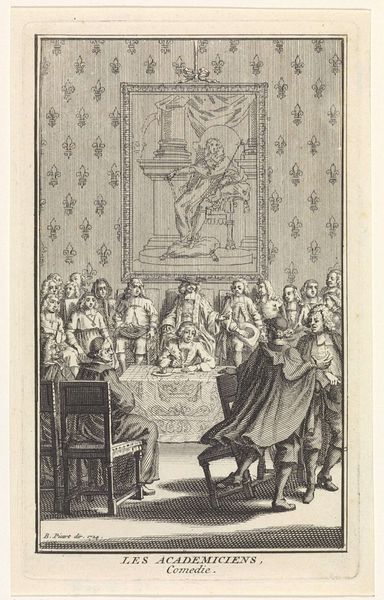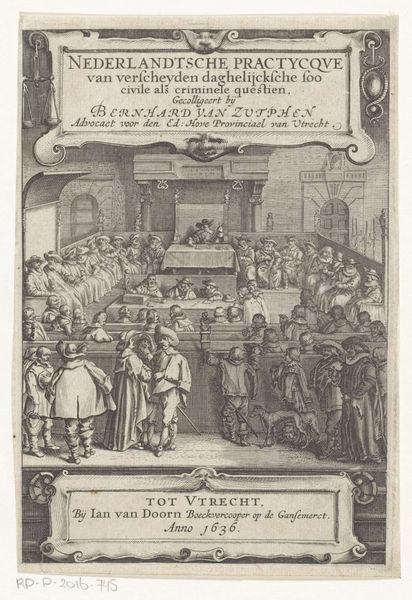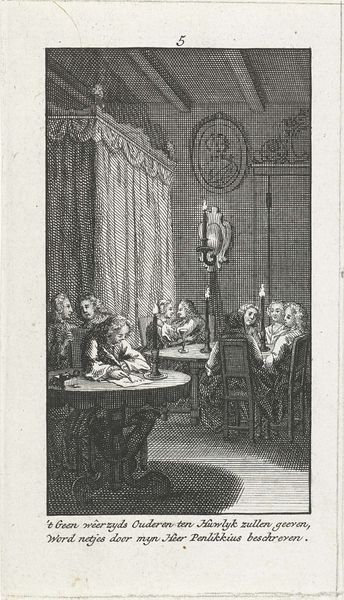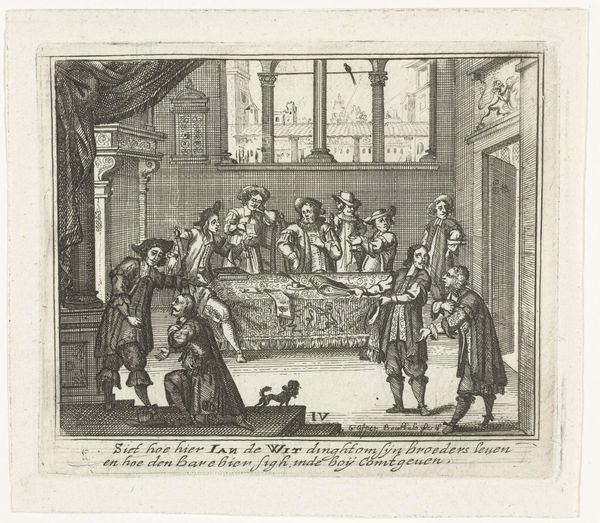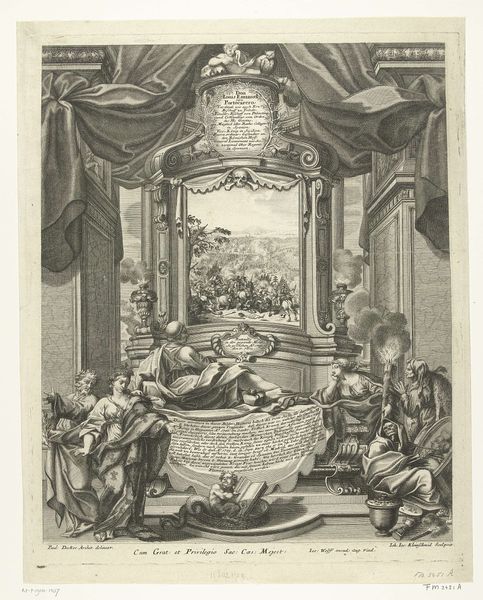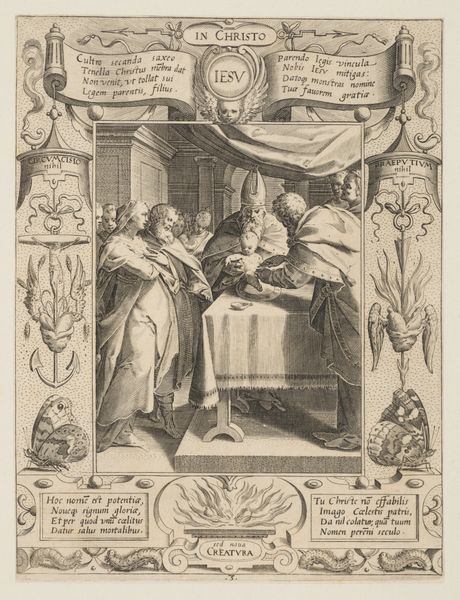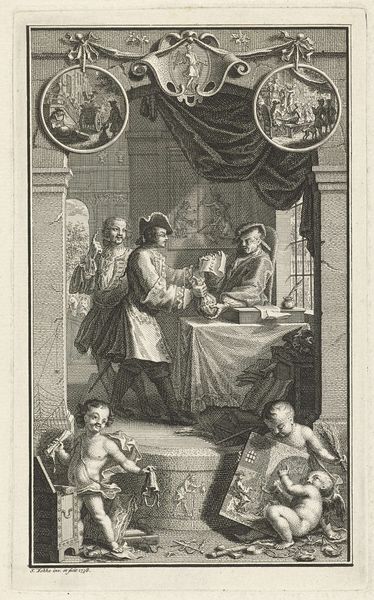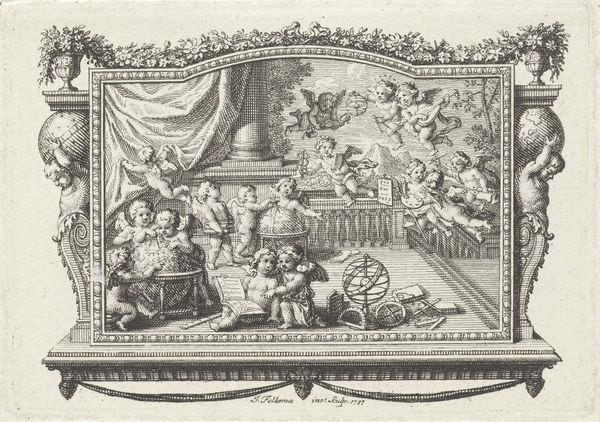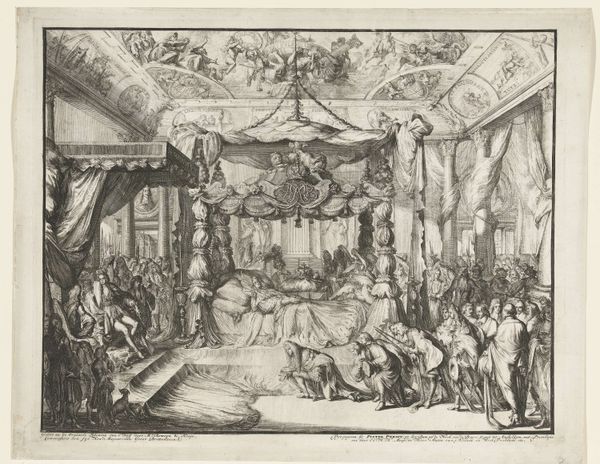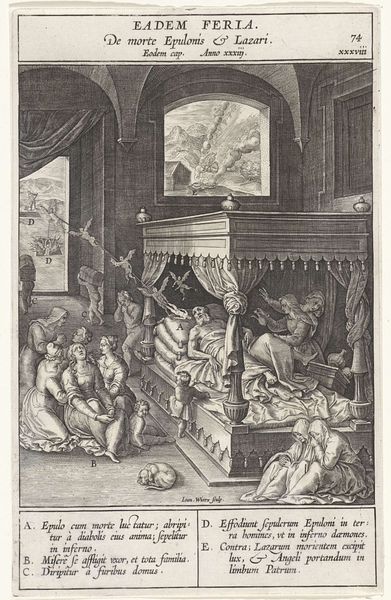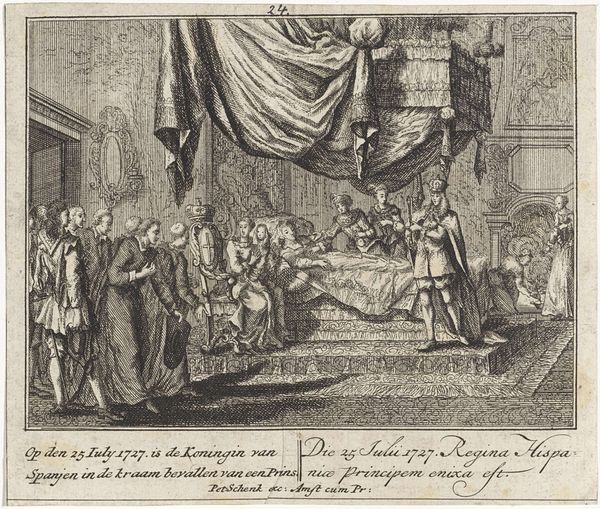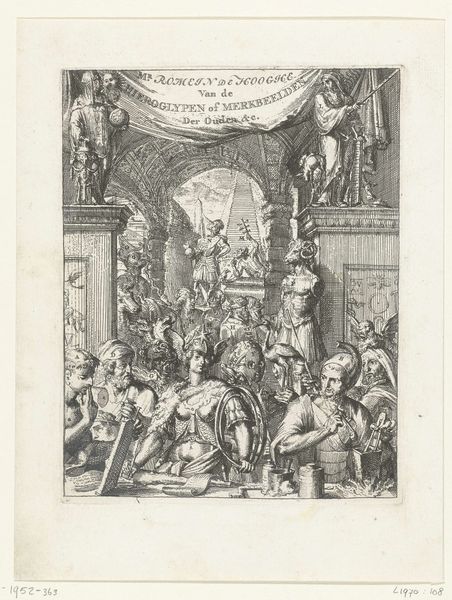
print, engraving
#
portrait
#
baroque
#
pen drawing
# print
#
old engraving style
#
group-portraits
#
history-painting
#
engraving
Dimensions: height 303 mm, width 200 mm
Copyright: Rijks Museum: Open Domain
Curator: This print, created by Pieter van den Berge between 1700 and 1702, is entitled “Sterfbed van Karel II, koning van Spanje,” or “Deathbed of Charles II, King of Spain.” It is currently held in the Rijksmuseum collection. Editor: The scene is steeped in heavy, dark fabrics and weighty expressions. It gives off a suffocating feeling, like the air in the room is thick with grief and expectation. The artist masterfully captures the claustrophobia of a king's final moments. Curator: Indeed. Van den Berge created this engraving in the Baroque style, known for its drama and elaborate detail. This image underscores the socio-political anxieties around the king's death. Charles II died without an heir, which threw the Spanish monarchy into crisis and triggered the War of the Spanish Succession. The print then, visualizes and, to some degree, perhaps even performs the transition of power. Editor: Absolutely. Consider the rigid formality surrounding Charles. Every figure is deliberately positioned; even the dogs seem to understand the gravity of the situation! This calculated arrangement highlights the artificiality of power structures, especially around gender. The fainting woman, seemingly overcome with emotion, fulfills a prescribed role, a spectacle within the larger political theater. Curator: Yes, and note how the artist renders the scene using engraving techniques. This choice provides detail and texture while also making the print easily reproducible, widely disseminating the image and its political message. The work captures a historical moment and immediately turns it into propaganda. Editor: The elaborate coat of arms overhead and even the putti flanking the top – seemingly innocent cherubs, actually serving the spectacle of monarchy – feel symbolic and carefully staged. How might viewers at the time interpret the composition given their particular political and social awareness? Curator: We have to think about what the printing press, relatively new, represents in terms of widespread circulation of messaging – a key element for influencing political sentiment, not only about the crown, but also to mobilize the idea of "Spain" itself. Editor: Considering how art actively shapes social narratives, seeing a monarch’s end presented in this manner provides a complex historical and theoretical moment to analyze Baroque culture. Curator: It offers a lens into understanding the intricate connection between art, politics, and public perception at this critical turning point in European history. Editor: Absolutely, reflecting on the intersectional aspects of this work opens possibilities to contemplate about representation, legacy, and the potent influence of art in times of shifting paradigms.
Comments
No comments
Be the first to comment and join the conversation on the ultimate creative platform.

